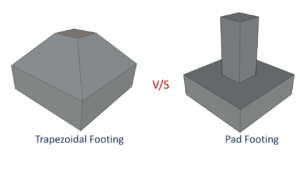
Atterberg Limits – Liquid, Plastic & Shrinkage Limit

The behavior of fine-grained cohesive soil depends on its mineral composition, water content, degree of saturation, and structure. In particular, the water content has always been considered an important and reliable indication of the behavior of cohesive soils since the beginning of soil mechanics. Swedish soil scientist and chemist Albert Mauritz Atterberg, in the early 1900s, first identified that a gradual decrease in water content of a clay soil slurry causes the soil to pass through different states or conditions. Atterberg Limit is a measure of the critical water content in a fine-grained soil.
Atterberg Limits and Indices
Atterberg defined the boundaries of four states of soil in the terms of “limits”. A fine-grained soil exists in different states depending on the amount of water in the soil system. The water content at which the soils change from one state to the other is known as consistency limits or Atterberg limit.
So the states are :
- The liquid state is the state of a fine-grained soil at which the soil will flow on its own weight.
- The plastic state is the condition at which the soil can be remolded to any shape without any development or cracks.
- Semi-solid is the state at which the soil can remold but only with the development of cracks.
- In the solid-state, the soil cannot be remolded at all, if done the soil specimen would get broken.
Atterberg also identified three limiting water contents, in between the soil states, that are commonly known as Atterberg’s limits. However, their potential use in soil mechanics was first indicated by Terzaghi. The upper and lower limits of water content within which a clay element exhibits a plastic behavior is defined as liquid and plastic limits respectively. Similarly, the limiting water content between semi-solid and solid states is the shrinkage limit
Liquid Limit
The liquid limit is the water content at the transition of liquid state to a plastic state, whereby it gains a certain small shearing strength. It is the minimum water content at which the soil is at the liquid state or the maximum water content at which the soil is in a plastic state. It is otherwise known as the minimum water content at which the soil tends to flow.
There are three methods of determining liquid limit:
- Casagrande’s Method
- One Point Method
- Cone Penetrometer Method:
Plastic Limit:
The plastic limit is the minimum moisture content at which the soil can be deformed plastically. As standardized, it can be taken as the smallest water content at which the soil begins to crumble when rolled out into thin threads, approximately 3mm in diameter. That is at the plastic limit the soil must gain some minimum stiffness or strength.
Shrinkage Limit:
The shrinkage limit is the smallest water content below which a soil sample will not reduce its volume any, that is, it will not shrink any further with further drying. It is the maximum water content below which there is no volume change when the soil is dried. It is the minimum water content at which the soil can be saturated.

Importance of Atterberg Limits:
- It has been found that both the liquid and plastic limit depends upon the type and amount of clay in a soil. However, the plasticity index depends mainly on the amount of clay. Thus, the plasticity index of a soil is a measure of the amount of clay in the soil.
- As the particle size decreases, both the liquid and plastic limits increase, but the liquid limit increases at a greater rate. Therefore, the plasticity index increases at a rapid rate. When some silts are added to clay, it becomes leaner. It’s the liquid limit and plastic limit both decreases, but the former at a faster rate. The net effect is that the plasticity index decreases. Plasticity index, therefore, measures of the fineness of the particles.
- The study of the plasticity index, in combination with liquid limit, gives information about the type of clay. Plasticity Chart, which is a plot between the plasticity index and liquid limit, is extremely useful for classification of fine-grained soils. In fact, the main use of these limits is in the classification of soils.
- Sand Soils change from the liquid state to the semi-solid state rather abruptly. These soils do not possess plasticity and are classified as non-plastic. Soils with the liquid limit less than 20% are generally classified as sands
- The plastic limit of soil increases if organic matter is added, without any significant increase in the liquid limit. Therefore soils with high organic content have a low plasticity index
- The liquid limit of a soil is an indicator of the compressibility of a soil. The compressibility of the soil generally increases with an increase in liquid limit
- The shrinkage index is directly proportional to the percentage of clay-size fraction present in the soil. It can be used as an indicator of clay.
- The toughness index is a measure of the shearing strength of the soil at the plastic limit. A high value of toughness index indicates a high percentage of colloidal clay containing mineral montmorillonite.
- When comparing the properties of two soils with equal values of the plasticity index, it is found that as the liquid limit increases, the dry strength and toughness decreases, whereas compressibility and permeability increases.
- When comparing the properties of two soils with equal liquid limits, it is found that as the plasticity index increase, the dry strength and toughness increase, whereas the permeability decrease. However, the compressibility remains almost the same.




